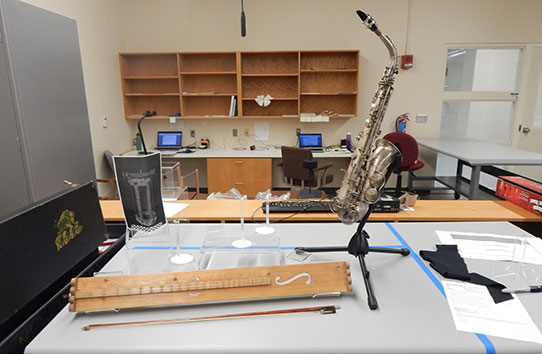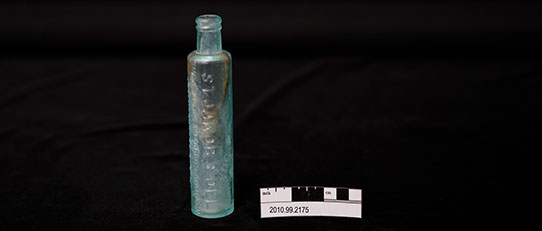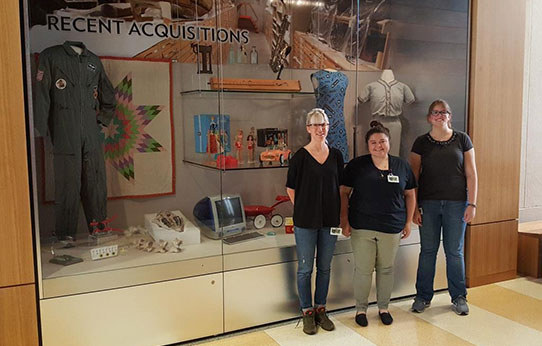Lost and Found in the Collection
One of my major projects as a Museum Division intern has been to go through objects found in our collection, or “FIC.” FIC objects are ones that have no record, were recorded as missing, misplaced, or were never part of the Museum Division collection in the first place and somehow, over time, ended up in collections storage.
Every week, I select several objects to bring to the Museum Collections Committee (MCC). At these meetings it is decided whether to accept these objects into the permanent collection. So far, I have submitted about one hundred FIC items to the MCC. There have been finds that have ranged from interesting to confusing.
One of the most interesting finds has been a bearskin jumpsuit. This suit is heavy and big. It was probably made for a person over six feet, since the jumpsuit spread across an entire work table when I took a picture of it. Inside the suit the pockets are made of denim, indicating that whoever made this cut the pockets out of a pair of jeans and sewed them to this bearskin jumpsuit. We have no records of this piece and have no idea how it ended up in museum collections storage. We do know, however, that whoever wore this stayed very warm. Because this item is so unique, the MCC decided it should be accepted into the Museum Division’s collection.
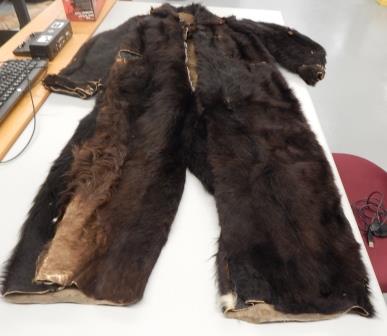
Bearskin jumpsuit found folded with no information on a shelf in storage.
I also found a small binder in the collection. At first glance, this was relatively unexciting and looked like some kind of small science textbook. After taking it to the Museum Collections Committee, we found that it was actually a guide to a rock collection that we have in our possession. Now, we can properly identify these rocks from the collector himself. At some point this guide book was separated from where it belongs, and now these two items are being stored together.

The binder had photos and newspaper clippings about the donor and collector as well as a guide to the collection.
Not everything I find stays with the Museum Division. Some of these finds go to the Instructional Collection maintained by SHSND’s Communication and Education Division. Staff uses this collection for educational programs, allowing the public to touch the items. For example, I recently found a box of nails and some silverware. For the Museum Division, these items are not a good fit for the permanent collection. We do not have a history of where they came from, and we already have similar items in the collection. By putting them in the Instructional Collection, the public will be able to get a closer look and learn about them.

These are just a few examples of found-in-collections objects that have gone to the education collection.
Some items we decide we don’t want. In these cases, I offer them to institutions around North Dakota. Many times they are taken by other educational institutions, museums, and historical societies. Recently, another institution took a military patch representing the 47th Infantry Division of the Minnesota National Guard. We already had four of these patches in the museum collection, but we were able to transfer this patch to a county historical society that had none. This is a way that we can avoid redundancies in our collection and allow other institutions across the state to tell stories using objects they currently do not have.
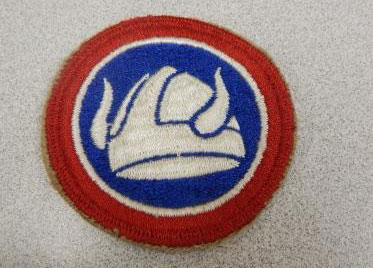
This patch from the 47th Infantry Division of the Minnesota National Guard is now helping a different institution interpret their history.
Museum professionals don’t like to discuss the uncataloged “found” items in a collection. However, this is a reality everywhere. When only a few people are responsible for thousands of objects, things are bound to be misplaced or mislabeled due to human error or just plain circumstance. Record keeping did not use to be as stringent as it is now. Museum database software also makes it easier to keep all information in one place. Being able to help find permanent homes for lost objects has been extremely rewarding. Institutions across the state can use these items, and we can finally put all the pieces of other objects back together again.


